With the lead screw installed, everything changed; there was the sound of the half nut rubbing on the lead screw and the lead screw handwheel was extremely hard to turn! While turning the handwheel from the spindle end to the tailstock end, I can feel my arm getting cramp...
I inspected the movement of the lead screw with the half nut engaged and disengaged. There seemed an excessive movement of the lead screw which may explained the problem I'm facing. The 3 cap screws holding the apron was released and tightened again with the half nut engaged. This ease off the tightness a little when turning with the handwheel and the rubbing sound is now gone. But the turning of the handwheel is still not smooth. Help!!! It is now worst than before!!!
Some pics of the session yesterday and this morning:
 |
| The half nut engagement lever removed. |
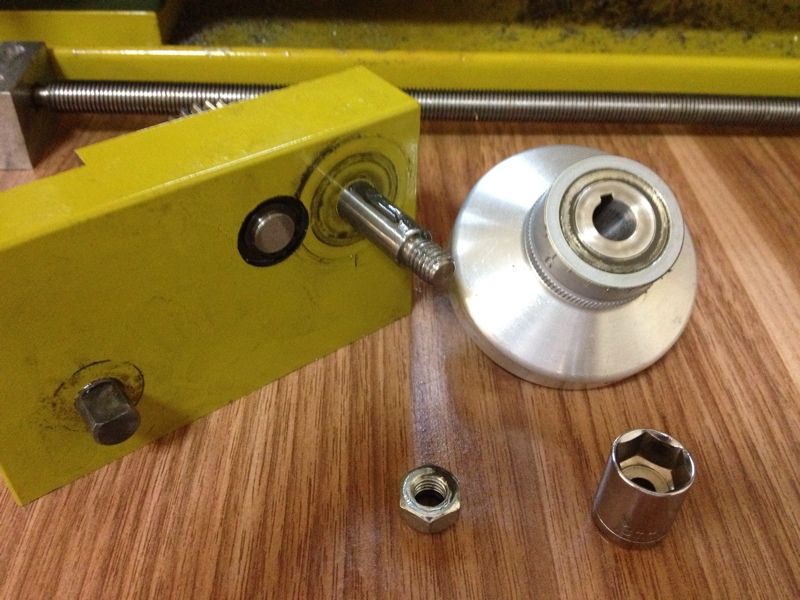 |
| Apron handwheel taken out to free the gear on the other side of the apron. |
 |
| Removing the key require some care. Otherwise, it may fly across the room and too lost to be found... |
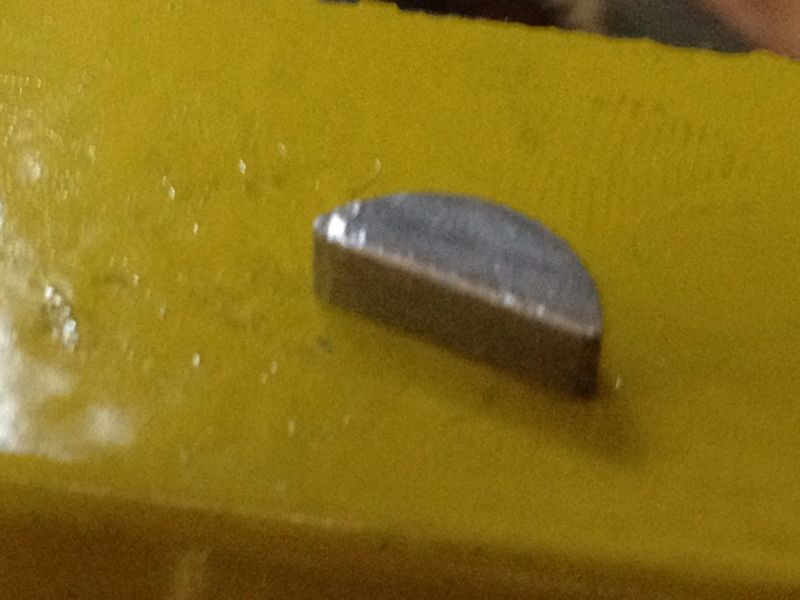 |
| Sorry for the blurry shot. The key didn't fly but I marred its surface a little. A smooth file was used to gently removed the burrs caused by the plier. |
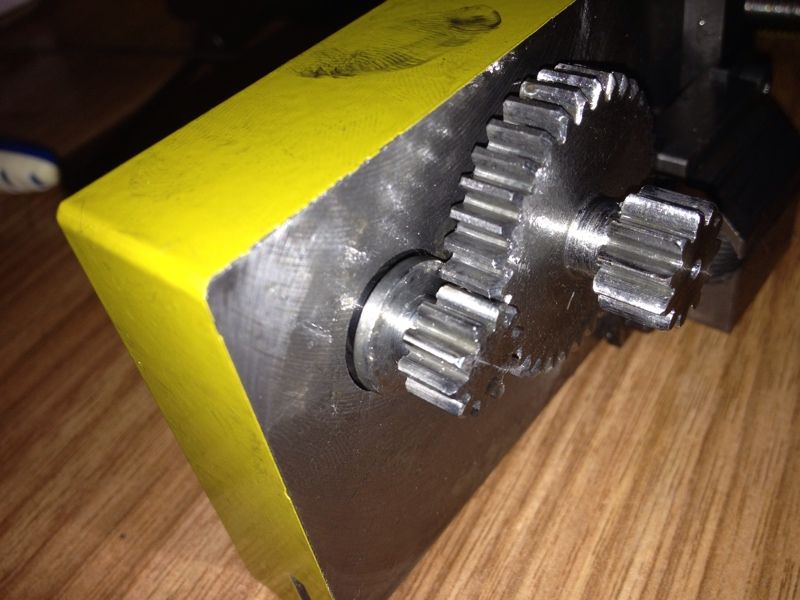 |
| The little gear on the left is what the apron handwheel was coupled to. It can be removed till the bigger one comes out. |
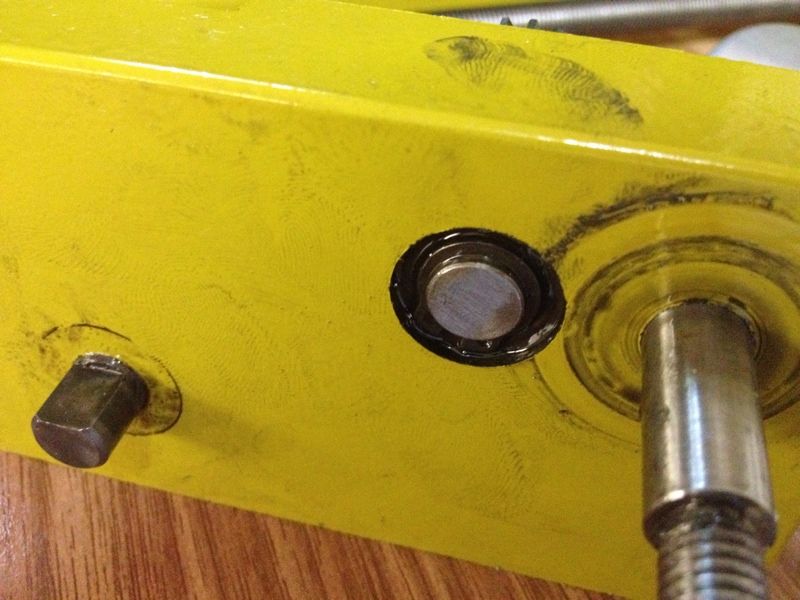 |
| This circlip is what holding the bigger gear. Even with the circlip plier, it flew to the other side of the shop. I heard it landed and managed to retrieve it - a miracle in my shop... |
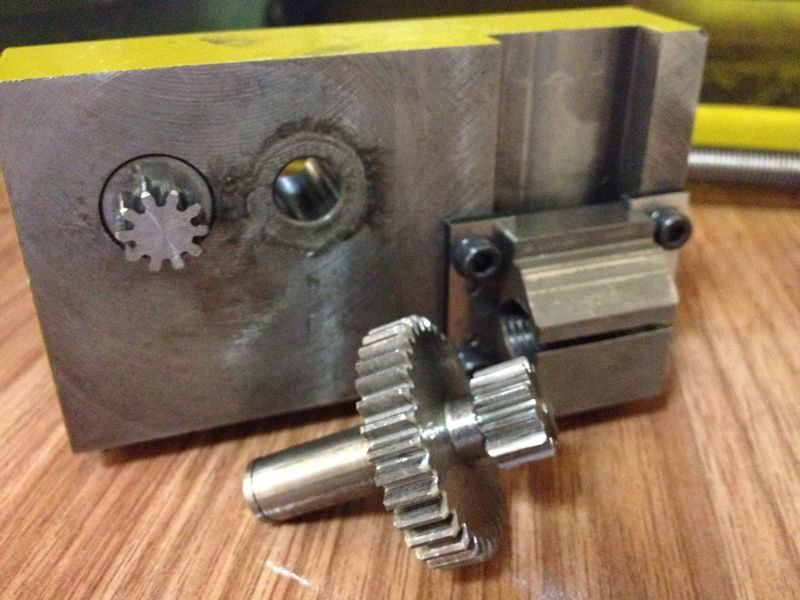 |
| Out came the bigger gear. The smaller one on it is what moves the carriage via a toothed rack beneath the lathe. |
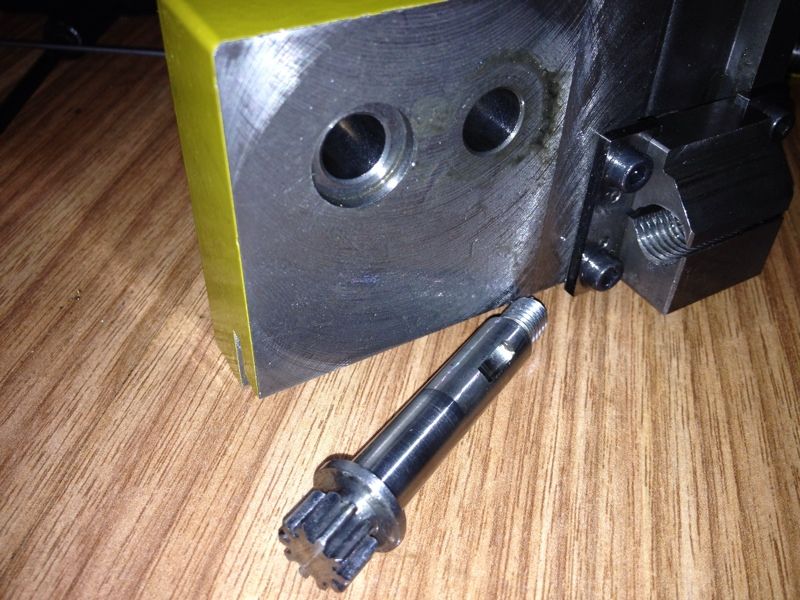 |
| This can now be removed. |
I can't seem to do anything further till I figure out how to remove the half nut and so proceeded to put things back.
 |
| Then I realized that the circlip was bent out of shape... 2 pliers were used to bend it back to close to its original shape. |
 |
| Before installing the apron and lead screw, the gib plate was adjusted. I found that the metric allen wrenches I bought are long enough to allow adjustments from beneath the lathe. |
The adjustment of the gib plate took me a long time. The cap screws beneathe were tighten enough to hold the plate close to the carriage but still allow ease of movement. The apron was then installed to test and further adjusted.
There are some bit of tight spot near the spindle but that's the best I can do with my current skill level...
The major problem popped up with the lead screw was installed. It was so tight with the half nut engaged that I can't turn the lead screw at all. The 3 cap screws holding the apron to the carriage was loosen, half nut engaged, and tightened again. I did this near the handwheel, in the middle of the way, and near the spindle. Found that doing this nearer the spindle yielded the best result.
Some slight movement can still be seen on the lead screw when the half nut was engaged. Some grease elbow still needed to turn it. This is not to my satisfaction at all.
This video was taken to show the lead screw movement when the half nut was engaged.
If you have any insight on this issue, kindly drop me a comment or send me an email. Any help is very much appreciated.

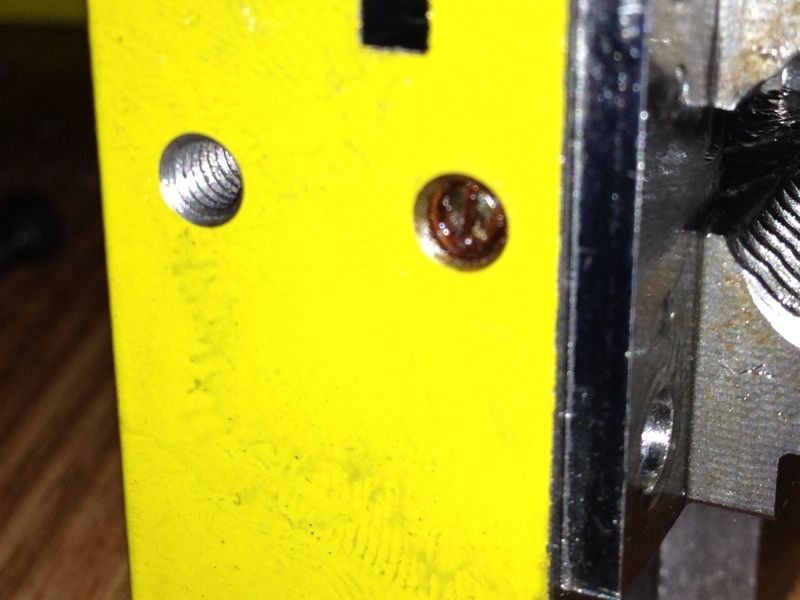
10 comments:
Wong, I believe that the pins were inserted after it was assembled and aligned. Then the holes drilled and reamed for the pins to be pressed in place.
With the screws out, you should be able to begin prying the plates up a little at a time.
Sometimes using single edge razor blades as thin wedges to get it started. Drive one in from each end, then another one on top of that one keeping the plates coming straight off without canting.
On reassembly the plates can be pulled back down with the cap screws and gentle tapping with a small hammer.
GeneK
GeneK,
Sounds like a task that Is potentially damaging... With Proxxon's support not readily available in this part of the world, I don't know if I've enough courage to attempt it. Putting it back is another concern...
Ok, say i numbed myself and ready to go, will there be adjustments I can make to improve the turning of the lead screw handwheel?
Regards,
Wong
Wong now I can see what you are trying to do. Last night the two movies only showed up as pictures. Now I can run them I see the light!
On my atlas lathes the lead screw itself can be fudged up and down with its mounts. But doesn't have a separate apron like yours. If you can't move the lead screw up using the mounting brackets you need to use the joint where the apron bolts on to the saddle. If you put some shims there it will move the apron down. just check what else is moving and how that will effect other things such as how the traverse gears mesh.
GeneK
GeneK,
I'll test putting shim stock between the carriage and the apron. Seems to be the only adjustments available. There are no adjustment available for the lead screw mount at the tailstock end. Adjusting it that way may cause the lead screw to be off parallel from the ways and toothed rack?
Thanks Gene.
Regards,
Wong
Wong, I'm surprised that the split nuts and the are on the same piece and no way to adjust each alone. But shimming the half nuts down will be increasing the engagement of the traverse gear with the rack. It maybe one of those compromise situations where you can't get both to perform perfectly, just get them both to work well enough.
Perhaps the rack can be adjusted on the bed?
GeneK
GeneK,
That was what Proxxon proposed when I first wrote to them when I got my lathe. But I don't see that having any influence on the position of the lead screw relative to the half nut. The carriage handwheel crank smoothly without the lead screw installed. Maybe lowering the rack a little will reduce the slight loose feel when cranking.
The lead screw handwheel also turn smoothly when the half nut is in disengage position. The carriage glides smoothly on the ways. That leaves me with the half nut alignment with the lead screw.
Hope I concluded correctly.
Regards,
Wong
Wong, I believe that lowering the apron to align the half nuts to the lead screw position will tighten the traverse gear to the rack and may get rid of the looseness you are talking about. If the traverse gear and rack get too tight, then try adjusting the rack to get sooth operation again.
GeneK
GeneK,
Wouldn't lowering the apron move the traverse gear away from the rack, reducing the "meshing" of the two?
Regards,
Wong
Wong, yes you are right, my old eyes looked at the last movie and at first it looked to me that the teeth were pointing up , but looking a little more carefully they are pointing down. A good friend once told me "don't grow old". He is seven years my senior. But what I have realized is that growing older is mandatory, growing up is optional.So I intend to enjoy what I have left, do what I can and enjoy the kids, grand kids and great grand kids!
GeneK
Old? You are? I thought I was conversing all the while with someone junior in age.
I like the part on growing up. My wife would think that of me; a kid in a man body.
Regards,
Wong
Post a Comment